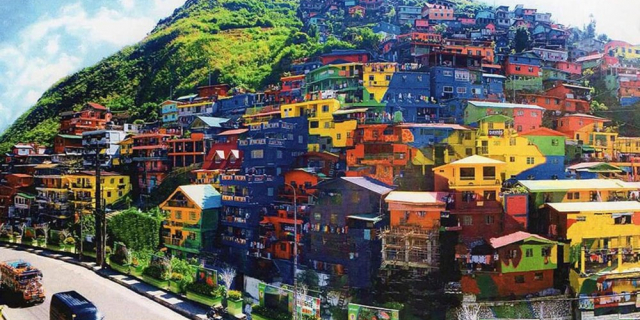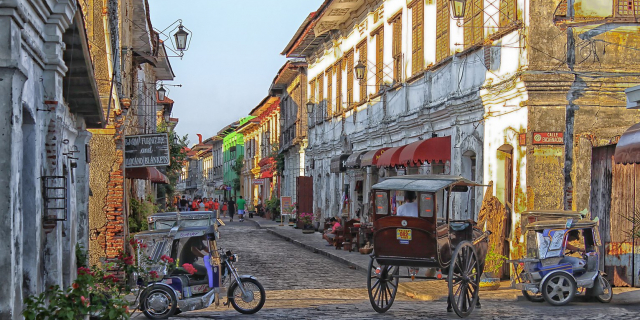Fort Santiago
Fort Santiago (Spanish: Fuerte de Santiago; Filipino: Kutà ng Santiago), built in 1571, is a citadel built by Spanish navigator and governor Miguel López de Legazpi for the newly established city of Manila in the Philippines. The defense fortress is located in Intramuros, the walled city of Manila.
The fort is one of the most important historical sites in Manila. Several people died in its prisons during the Spanish Empire and World War II. José Rizal, the Philippine national hero, was imprisoned here before his execution in 1896. The Rizal Shrine museum displays memorabilia of the hero in their collection and the fort features, embedded onto the ground in bronze, his footsteps representing his final walk from his cell to the location of the actual execution.
It is only a few meters away from the Manila Cathedral and the Palacio del Gobernador (lit. Governor's Palace, currently the o...Read more
Fort Santiago (Spanish: Fuerte de Santiago; Filipino: Kutà ng Santiago), built in 1571, is a citadel built by Spanish navigator and governor Miguel López de Legazpi for the newly established city of Manila in the Philippines. The defense fortress is located in Intramuros, the walled city of Manila.
The fort is one of the most important historical sites in Manila. Several people died in its prisons during the Spanish Empire and World War II. José Rizal, the Philippine national hero, was imprisoned here before his execution in 1896. The Rizal Shrine museum displays memorabilia of the hero in their collection and the fort features, embedded onto the ground in bronze, his footsteps representing his final walk from his cell to the location of the actual execution.
It is only a few meters away from the Manila Cathedral and the Palacio del Gobernador (lit. Governor's Palace, currently the office of the Commission on Elections).
The location of Fort Santiago was once the site of a palisaded fort, armed with bronze guns, of Rajah Matanda, a Muslim Tagalog rajah of pre-Hispanic Manila who himself was a vassal to the Sultan of Brunei. The fort was destroyed by maestre de campo (master-of-camp) Martin de Goiti who, upon arriving in 1570 from Cebu, fought several battles with the Muslim natives. The Spaniards started building Fort Santiago (Fuerte de Santiago) after the establishment of the city of Manila under Spanish rule on June 24, 1571, and made Manila the capital of the newly colonized islands.[1]
The first fort was a structure of palm logs and earth. Most of it was destroyed when the city was invaded by Chinese pirates led by Limahong. Martin de Goiti was killed during the siege. After a fierce conflict, the Spaniards under the leadership of Juan de Salcedo, eventually drove the pirates out to Pangasinan province to the north, and eventually out of the country.[2]: 32–44
The construction of Fort Santiago with hard stone, together with the original fortified walls of Intramuros, commenced in 1590 and finished in 1593 during the term of Governor-General Gómez Pérez Dasmariñas. The stones used were volcanic tuff quarried from Guadalupe (now Guadalupe Viejo in Makati).[3] The fort as Dasmariñas left it consisted of a castellated structure without towers, trapezoidal in trace, its straight gray front projecting into the river mouth. Arches supported an open gun platform above, named the battery of Santa Barbara, the patron saint of all good artillerymen. These arches formed casemates which afforded a lower tier of fire through embrasures. Curtain walls of simplest character, without counter forts or interior buttresses, extended the flanks to a fourth front facing the city.[4]
 Side facade of Fort Santiago in 1880. The edifice was partially destroyed by the earthquake of July 1880.
Side facade of Fort Santiago in 1880. The edifice was partially destroyed by the earthquake of July 1880.In 1714, the ornate gate of Fort Santiago was erected together with some military barracks.[5] The Luzon earthquakes of 1880, which destroyed much of the city of Manila, destroyed the front edifice of the fort changing its character. The years: 1636, 1654, 1670, and 1672; saw the deployment of 22, 50, 86, and 81 Latin-American soldiers from Mexico at Fort Santiago.[6]
During the leadership of Fernándo Valdés y Tamon in the 1730s, a large semicircular gun platform to the front called media naranja (half orange) and another of lesser dimensions to the river flank were added to the Bastion of Santa Barbara. The casemates were then filled in and embrasures closed. He also changed the curtain wall facing cityward to a bastioned front. A lower parapet, bordering the interior moat, connects the two bastions.[4]
British occupationOn September 24, 1762, British forces led by Brigadier-General William Draper and Rear-Admiral Samuel Cornish invaded and captured Manila, and along with it Fort Santiago. It was during this time that the fort served as a base of operations for the Royal Navy until April 1764 when they agreed to a ceasefire with the Spanish. [7]
 American occupied Fort Santiago in 1940American colonial period
American occupied Fort Santiago in 1940American colonial period
 The raising of the American Flag at Fort Santiago.
The raising of the American Flag at Fort Santiago.On August 13, 1898, the American flag was raised in Fort Santiago signifying the start of the American rule in the Philippines. The fort served as the headquarters for the U.S. Army and several changes were made to the fort by the Americans. One of these changes included the draining of the moats surrounding the fort. The grounds were then transformed into a golf course.
World War IIDuring World War II, Fort Santiago was captured by the Japanese Imperial Army, and used its prisons and dungeons including the storage cells and gunpowder magazines for hundreds of prisoners who were killed near the end of the war (see Manila massacre).[8] The fort sustained heavy damage from American and Filipino military mortar shells during the Battle of Manila in February 1945. Also, approximately 600 American prisoners of war died of suffocation or hunger after being held in extremely tight quarters in the dungeons at Fort Santiago.































Add new comment